Killers of the Flower Moon is an epic in every sense
Scorsese continues to become more contemplative in his work
On July 13th, 2023, the Screen Actors Guild went on strike against the Alliance of Motion Picture and Television Producers, the trade association that represents over 350 American television and film production companies. Members of this union are demanding their fair share of the profits that their hard work and dedication produces for these multinational media conglomerates and their overpaid CEOs.
There has been conflicting information on what does and does not count as crossing the picket line, and questions were raised if reviewing new films acted as promotion, a prohibited act under the strike rules. However, after reviewing all of the information available, movie reviews seem to be permissible for non-union members, and we’ve decided to continue reviewing new films in theaters and on streaming services as planned.
That being said, CineMancuso and The New Artist Workshop unequivocally stand with workers - above and below the line, striking or not, unionized or not - and we’re not going to remove this disclaimer from our reviews until the studios satisfy the union’s demands.
If you want to help the cause, post about it on social media, or donate to each union’s respective strike funds. Alone, we can’t do anything. Together, we can change everything.
Back in May, Deadline spoke with Martin Scorsese and produced a comprehensive interview with the New Hollywood master. At its end, the iconic director observed that the whole world had opened up to him, but he lamented that it was too late. Pressed to elaborate, he confessed, “I’m old. I read stuff. I see things. I want to tell stories, and there’s no more time. Kurosawa, when he got his Oscar…he said, ‘I’m only now beginning to see the possibility of what cinema could be, and it’s too late.’ He was 83. At the time, I said, ‘What does he mean?’ Now I know what he means.” There have been, are, and will be once-in-a-generation talents that are as talented as they are devoted to cinema as a medium, but Scorsese may prove to be the artform’s most devout follower. Despite a decades-long career, filled with both critical and commercial grand-slams and strikeouts, the 80-year old filmmaker still feels the call to create with an unbounded enthusiasm tempered only by the slow march of time. Fifty years exactly after his first “major” film Mean Streets, Scorsese’s Killers of the Flower Moon represents much - a potential climax to a storied filmography; a sign of a changing industry willing to back mammothly-large (both in scope and length) historical epics; and a move to provide more complicated representation to marginalized communities. But above all, the film is a breathtaking crime epic, a revisionist Western with intergenerational appeal, and a bold commitment to cinema in our transactional media landscape.
On the surface, this source material defies our preconceptions of what a Scorsese film is - while his subject matter is not uniform, he’s best known for his high-energy crime dramas, especially of the mafia variety. Furthermore, his films that do buck this stereotyping do so completely, having little in common with his most iconic work. Yet his adaptation of the nonfiction book of the same name bridges this material divide; Killers of the Flower Moon reflects the same criminal relentlessness and moral ambiguity present in films like GoodFellas or Casino, just now with a new coat of paint. This film, too, features upbeat popular music of the era that contrast scenes of horrible violence, a cliché that Scorsese is somewhat responsible for creating. The setting of 1920s Oklahoma with a focus on Native Americans may be new territory for Scorsese, but the thematic centering of greed - and what amoral men will do to satisfy it - is the same. It’s that “in” that gives Scorsese the confidence to approach a story mostly foreign to him.
But this raises interesting questions - is Scorsese really the one to tell this story? Removing artistic or thematic considerations, shouldn’t a member of the Osage tribe, or at least someone of Native American descent, be the one to do so? I’m about as white as they come, so I defer to indigenous voices on this issue. But at the same time, marginalized communities are not monolithic, and disagreement is common. From my own limited understanding of such matters, learning about Scorsese’s extensive collaboration with the Osage tribe, and now having seen the film, Killers of the Flower Moon reads as a loving tribute to the Osage, though not quite of the Osage; Scorsese has come as close as any non-Osage person possibly could, and he imbues his indigenous characters with a complexity and humanity that dispose of one-dimensional stereotypes. But while he doesn’t victimize the Osage, they are nevertheless the victims in the story, no matter how wonderfully realized they are. Scorsese could have given them even more focus, as their full integration into the story subsides as the narrative progresses. Yet despite this shortcoming, the film is a full-throated affirmation of racial atrocity forgotten to the annals of history. The events of this story, much like the Tulsa Race Massacre which Scorsese directly uses as a reference, are not ancient history, and descendants and communities are still feeling the effects, however residually. Scorsese may center the white men of this story, but he sincerely wrestles with their role in this tragedy, ranging from apathetic at best to genocidal at worst.
Leonardo DiCaprio’s Ernest Burkhart is possibly the slimiest and least likable protagonist in Scorsese’s entire filmography. Marty has always resisted the idea that protagonists should or must be likable, but he and co-writer Eric Roth push this idea to its absolute limit. The historical record is unclear on Ernest’s true feelings - did he really love his Osage wife Molly, or was he just in it for the money? The film suggests that the answer is both and also neither; he’s able to unfathomably compartmentalize antithetical motivations and actions, as if his left hand doesn’t even know what his right hand is doing. To complicate matters further, he can, at times, seem completely empty and devoid of purpose, moving to the whims of the wind, an easily manipulatable force looking for a cause. He’s more or less at the behest of his uncle William “King” Hale, a nickname that would be too on-the-nose if it weren’t historically accurate. Robert De Niro effortlessly evokes King’s sinister paternalism; he professes an admiration, even love, for the Osage people, yet these affections are always secondary - fundamentally so - to his insatiable quest for money and power. The amorality of these two men is sharply contrasted by Lily Gladstone’s Molly who watches in horror as her community and immediate family are slowly removed from the equation. Gladstone, along with DiCaprio and De Niro, turns in a strong performance, though neither she nor the rest of the cast are particularly revelatory, despite some critical hype.
No, the main star here is Scorsese himself. When a filmmaker is as prolific as he has been over the past half-century, quality will certainly vary. Your favorite Scorsese films probably say more about you than they do about him, but I’ve preferred his more recent work. The Wolf of Wall Street, while good, felt like the apotheosis of his worst tendencies. But films like Silence, The Irishman, and now Killers of the Flower Moon suggest a more contemplative Scorsese, one whose direction is more reserved and gives more breathing room to his thematic ambitions and his actors. Films like GoodFellas and The Wolf of Wall Street, regardless of their moral depravity, are, for lack of a less reductive term, fun, but Scorsese’s latest films are softer and more melancholic. His films have always been long, but this film’s expansive 206-minute runtime gives Scorsese a more versatile canvas on which to explore these ideas. Criticisms of the length have mostly been bad-faith clickbait takes, and the film, while full, never boring. I almost wish the film was even longer - the current cut lacks sufficient explanations of the sociopolitical climate, mainly in how concepts like headrights and the guardian system really work, that would have added to our understanding of the world and the stakes of the story.
At this point , seeing a new Martin Scorsese film is like seeing your grandmother for the holidays - this may be their last. I don’t say this to be unnecessarily shallow or cruel, but the comparison is apt. Despite the octogenarian's deepest wish to make films forever, he will eventually make his last. To that end, Killers of the Flower Moon feels like the perfect conclusion to an exciting, if perhaps inconsistent, career. The film serves as the culmination of his aesthetic and thematic development, and the film’s final scene is a bizarre yet welcome metatextual reflection on true-crime stories that also serves as a deeply cathartic coda to an accomplished filmography. If The Wolf of Wall Street, in my mind, represents Scorsese’s worst impulses, his adoring tribute to the Osage people represents his best. I hope that he goes on to deepen our understanding of his oeuvre, but if this film signifies its conclusion, it’s not a bad way to go out.




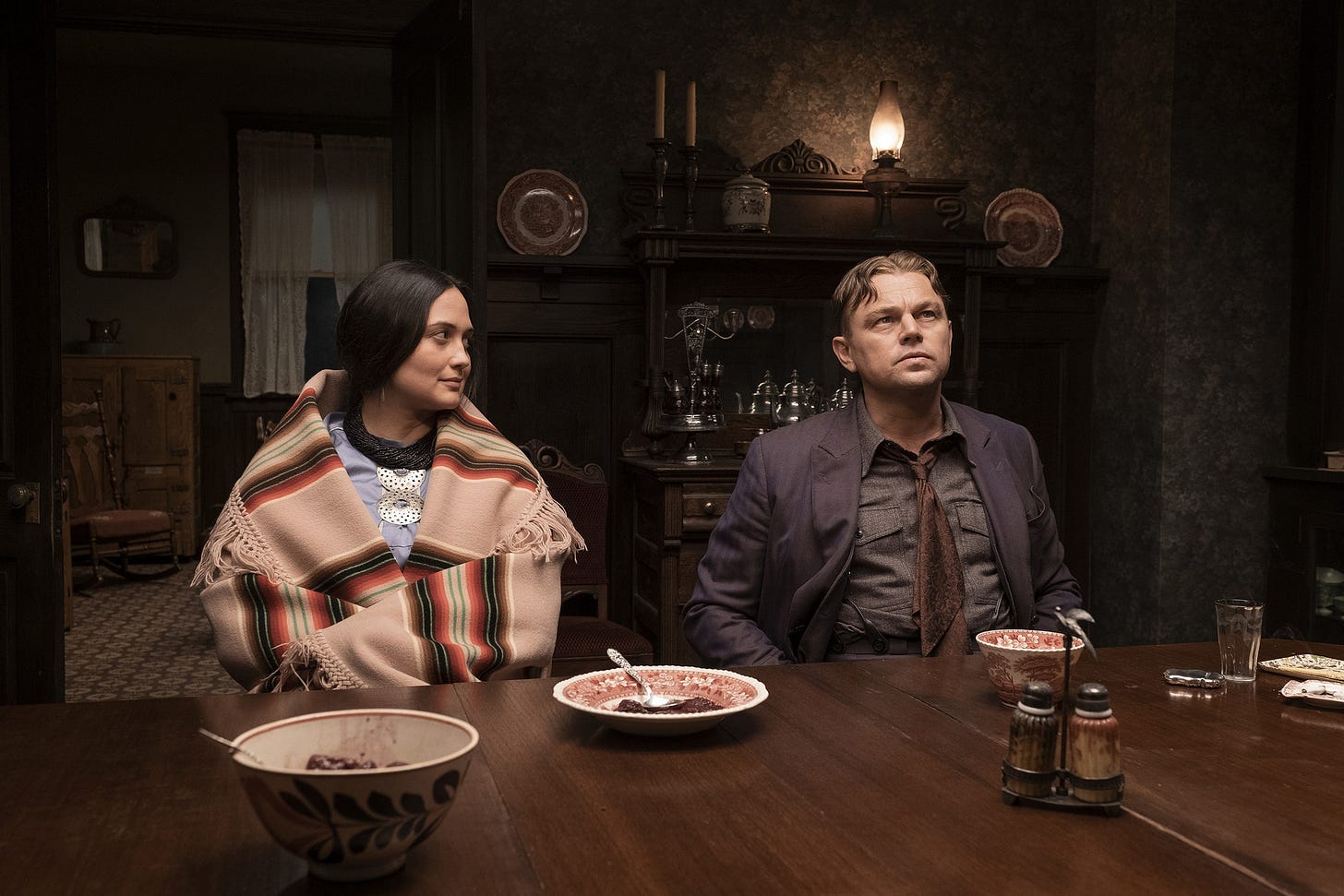

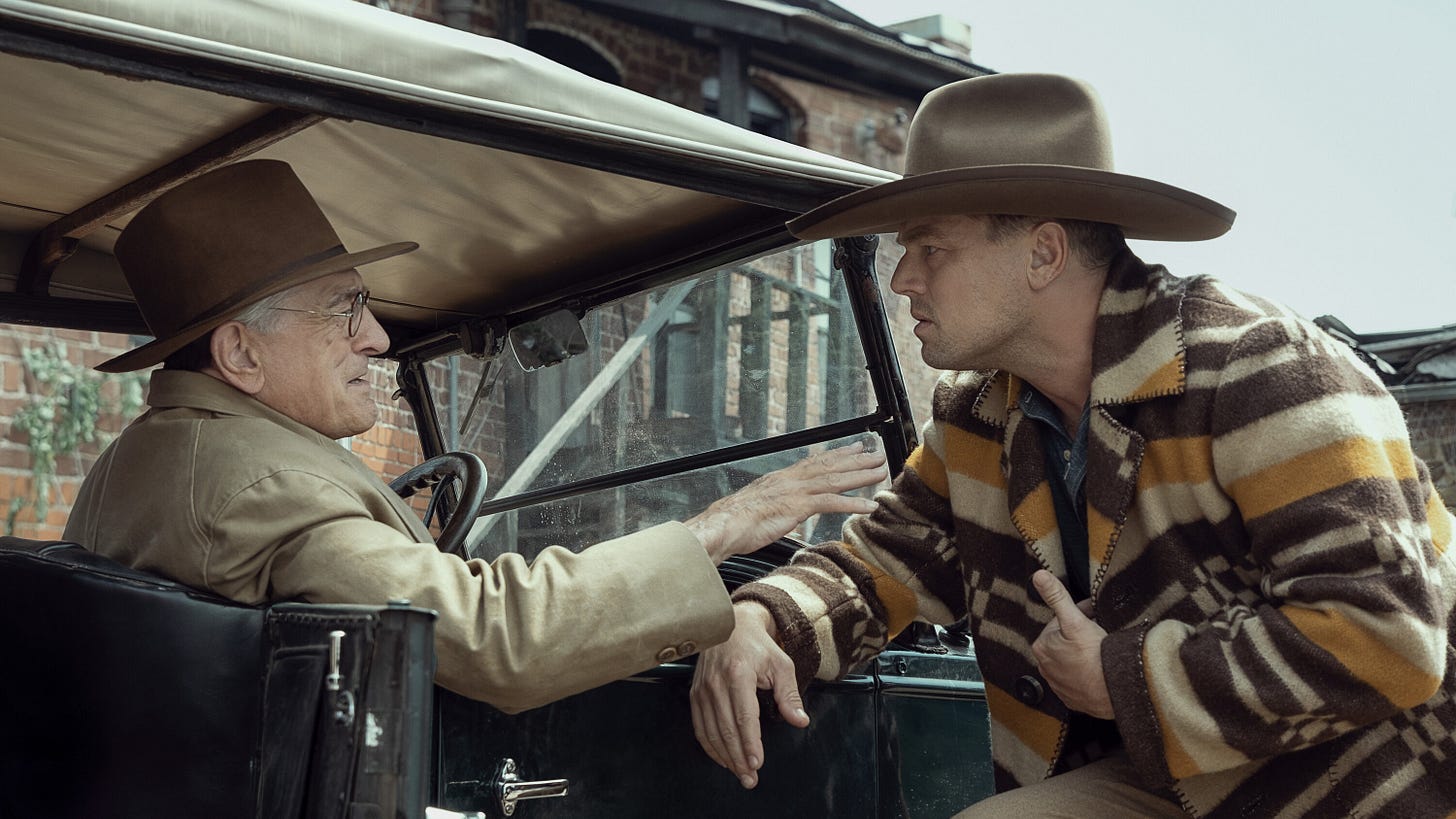
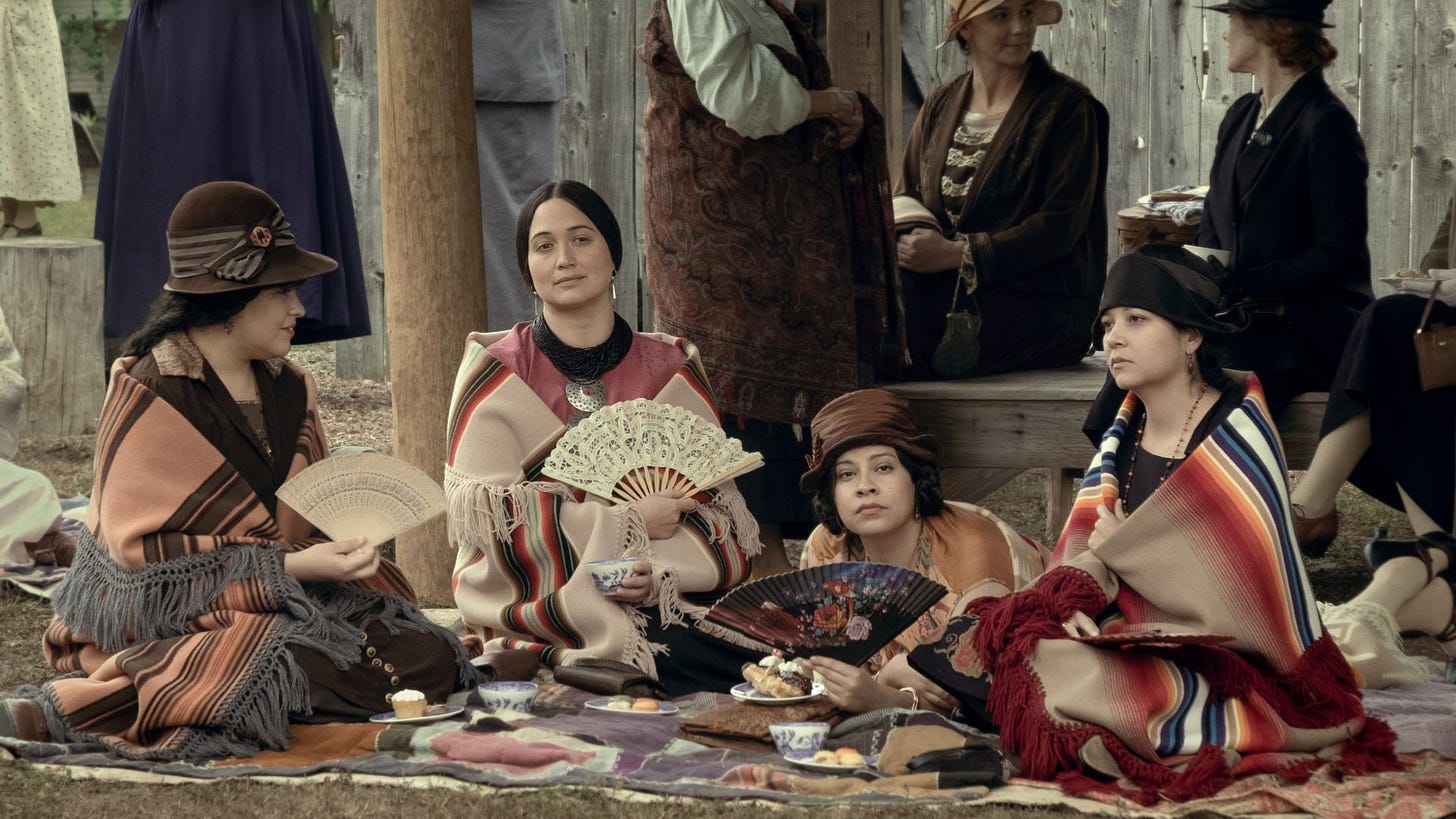
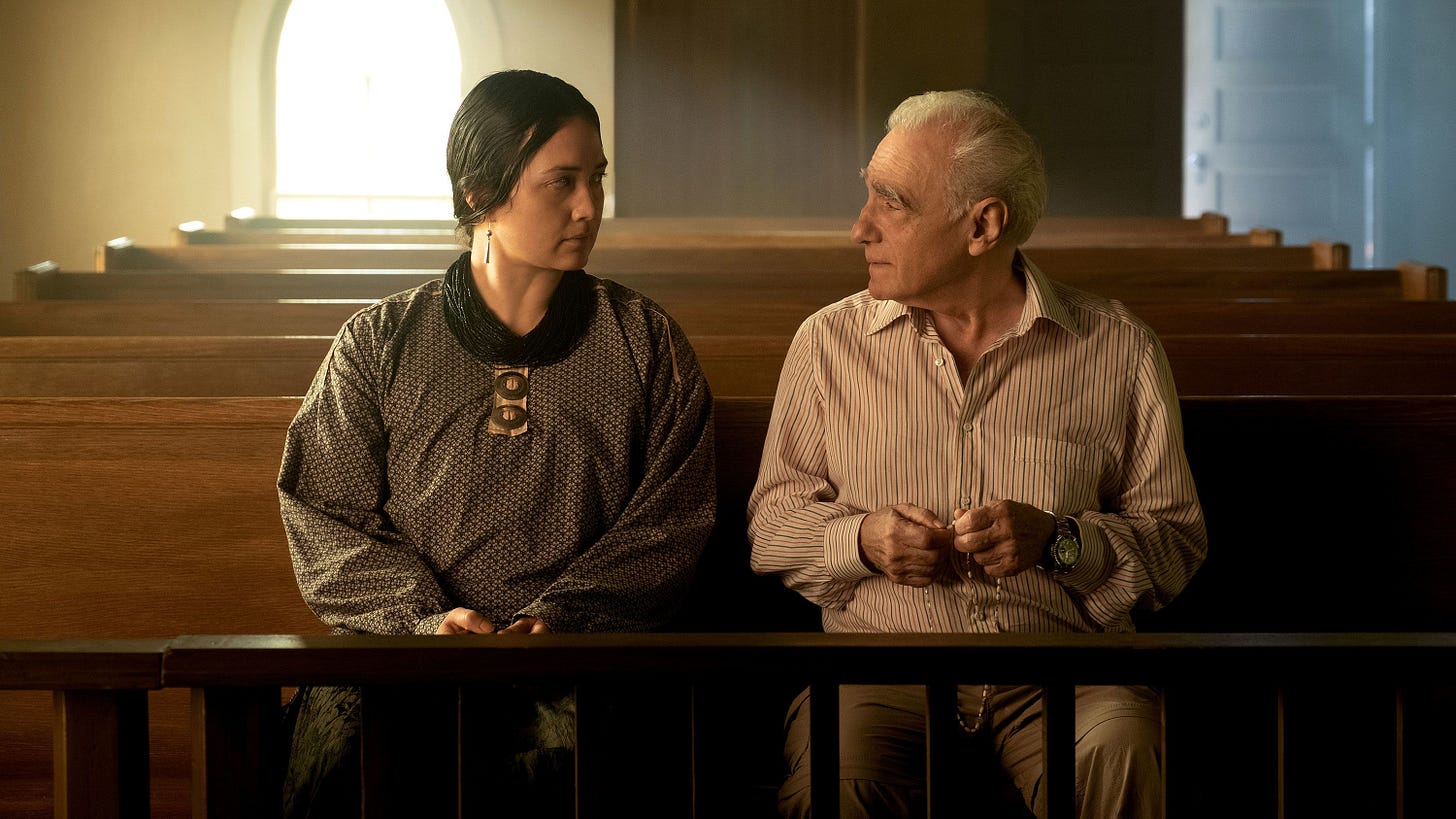
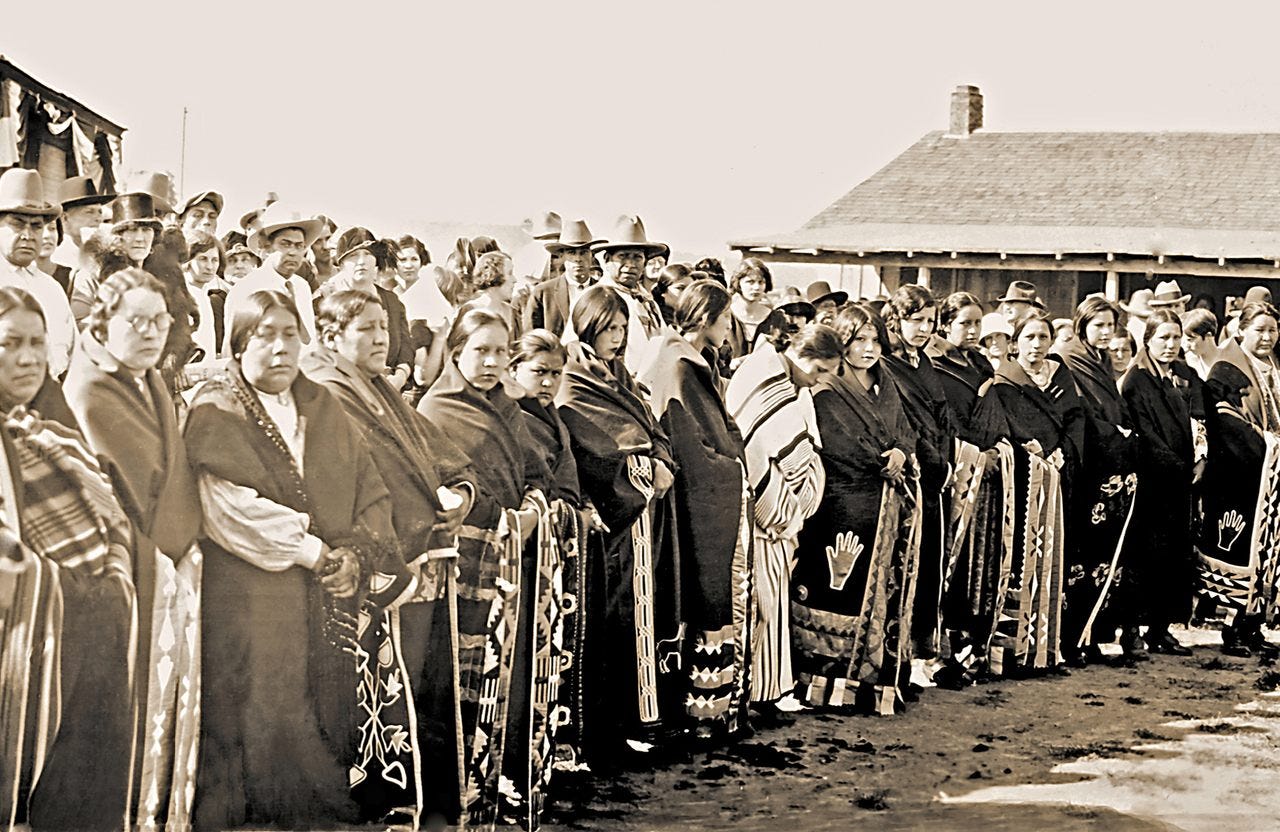
While I prefer this film FAR more than "The Wolf of Wall Street" I do think they both include something that Scorsese has run wild with which is extended improv. Improv has always been a major part of his style going all the way back to "Who's That Knocking at my Door?" and "Mean Streets" but recently he feels even more and more compelled to allow scenes to drag on while the actors run the show.
I think it generally works in this film though I do think it's partly to blame for the film's bloated length. Specifically it hampers the blocking of a few scenes where the characters feel uncharacteristically locked into a medium or close-up for long periods of time. The first big scene between Ernest and Hale is one example that sticks out very prominently. The beat switches feel so disjointed, almost as if DeNiro was just given a to-do list of subjects and exposition to cover.
I'm sounding like a hater but I'm not. I really enjoyed the picture and think Scorsese has entered the best phase of his career with this current trilogy of internal epics (Silence, The Irishman, and now Killers of the Flower Moon). I'm just brining up this criticism of his overuse of improv because I think it's interesting that even after all these years, Scorsese still makes film with the curiosity and enthusiasm of a student, trying to push every tool to its limit.